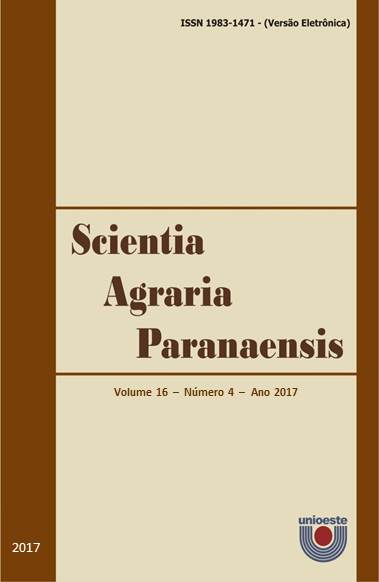Alternative biodigesters for organic waste treatment
Palabras clave:
Biodigestão de resíduos orgânicos, Biodigestor alternativo, Reatores anaeróbios.Resumen
The uncontrolled generation of organic waste causes the decrease of the life of landfills. Alternative treatment processes such as anaerobic digestion of organic wastes may be a viable alternative to disposal of such organic waste, and the use of this technology can still generate gains using biofertilizer in agriculture. Thus, the present study aimed to evaluate the anaerobic digestion of Ceasa vegetables wastes from Cascavel, Paraná State, Brazil, by adding swine manure doses (inoculum) in order to reduce the volume of waste going to landfills. Twelve alternative digesters were developed, and are added 29 L of effluent (fruit and vegetable wastes) in each reactor, by adding three levels of inoculum: 0, 1, 2 and 3 L (pig manure). During 50 days of digestion were analyzed the following physical and chemical parameters of the effluent: pH, temperature, turbidity, electrical conductivity, total solids (TS), volatile solids (VS), chemical oxygen demand (COD) and phosphorus (P) concentrations. Satisfactory results were obtained in most of assessed parameters. TS reductions were observed in the levels of 60% in the treatment with 2 L of inoculum. With respect to COD was possible to obtain a reduction of 57%. With the obtained results it can be concluded that the manufactured biodigesters were effective in the digestion of Ceasa waste, however, the effluent just can be used for biofertilization by pH correction, due to its acidity.
Descargas
Publicado
Cómo citar
Número
Sección
Licencia
Aviso de Direito Autoral Creative Commons
Política para Periódicos de Acesso Livre
Autores que publicam nesta revista concordam com os seguintes termos:
1. Autores mantém os direitos autorais e concedem à revista o direito de primeira publicação, com o trabalho simultaneamente licenciado sob a Licença Creative Commons Attribution que permite o compartilhamento do trabalho com reconhecimento da autoria e publicação inicial nesta revista.2. Autores têm autorização para assumir contratos adicionais separadamente, para distribuição não-exclusiva da versão do trabalho publicada nesta revista (ex.: publicar em repositório institucional ou como capítulo de livro), com reconhecimento de autoria e publicação inicial nesta revista.
3. Autores têm permissão e são estimulados a publicar e distribuir seu trabalho online (ex.: em repositórios institucionais ou na sua página pessoal) a qualquer ponto antes ou durante o processo editorial, já que isso pode gerar alterações produtivas, bem como aumentar o impacto e a citação do trabalho publicado (Veja O Efeito do Acesso Livre).
Licença Creative Commons
Esta obra está licenciada com uma Licença Creative Commons Atribuição-NãoComercial-CompartilhaIgual 4.0 Internacional, o que permite compartilhar, copiar, distribuir, exibir, reproduzir, a totalidade ou partes desde que não tenha objetivo comercial e sejam citados os autores e a fonte.


